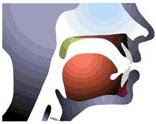Consonant Features
In terms of phonology, consonant features refer to the basic characteristics of each consonant, the way they are produced, and the place where they are pronounced. These characteristics are unique; that is, every single consonant in the language has distinctive features that make them different from the rest of the consonant sounds.
Consonant features are not only used to describe each consonant individually. They are also used group consonants, depending on the manner or place of articulation. In addition to these, they help us group consonants depending on their lack or presence of vibration in the vocal cords.
As a language student, the features are useful to help us find the right way to pronounce each sound. As a future teacher, this knowledge will allow you to instruct your students to place their speech apparatus in the right position to pronounce sounds clearly and smoothly. Knowing this will help you reduce your accent in English.
Now, you might be wondering how consonants are classified based on consonant features. There are three ways to classify consonants:
1. by their voicing quality (absence or presence of vibration),
2. by their place of articulation, and
3. by their manner of articulation.
In the following sessions we will classify consonants in various way, but on this session we will only work with voicing.
Let’s classify the following consonants based on voicing: voiced or voiceless.
VOICED = including vibration
VOICELESS = without any vibration
/b/ = voiced consonant
/f/ = voiceless consonant
| /d/ | /p/ | /ð/ |
| /g/ | /r/ | /ϴ/ |
| /h/ | /s/ | /ʃ/ |
| /k/ | /t/ | /ʒ/ |
| /l/ | /v/ | /tʃ/ |
| /m/ | /w/ | /dʒ/ |
| /n/ | /y/ | |
| /ŋ/ | /z/ | |




















